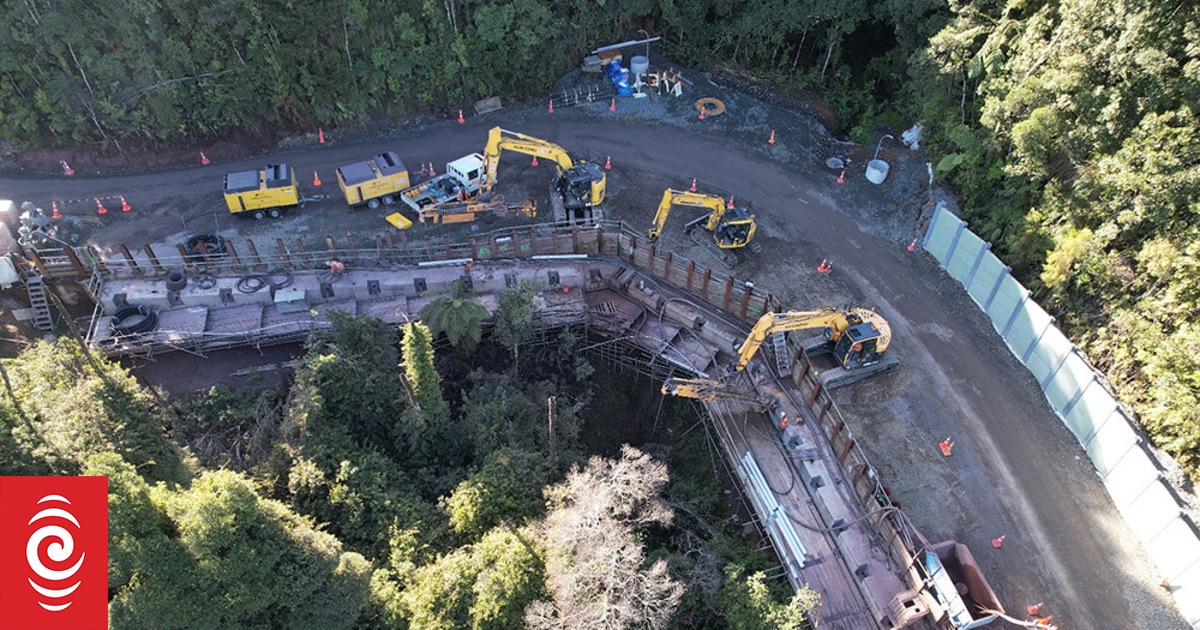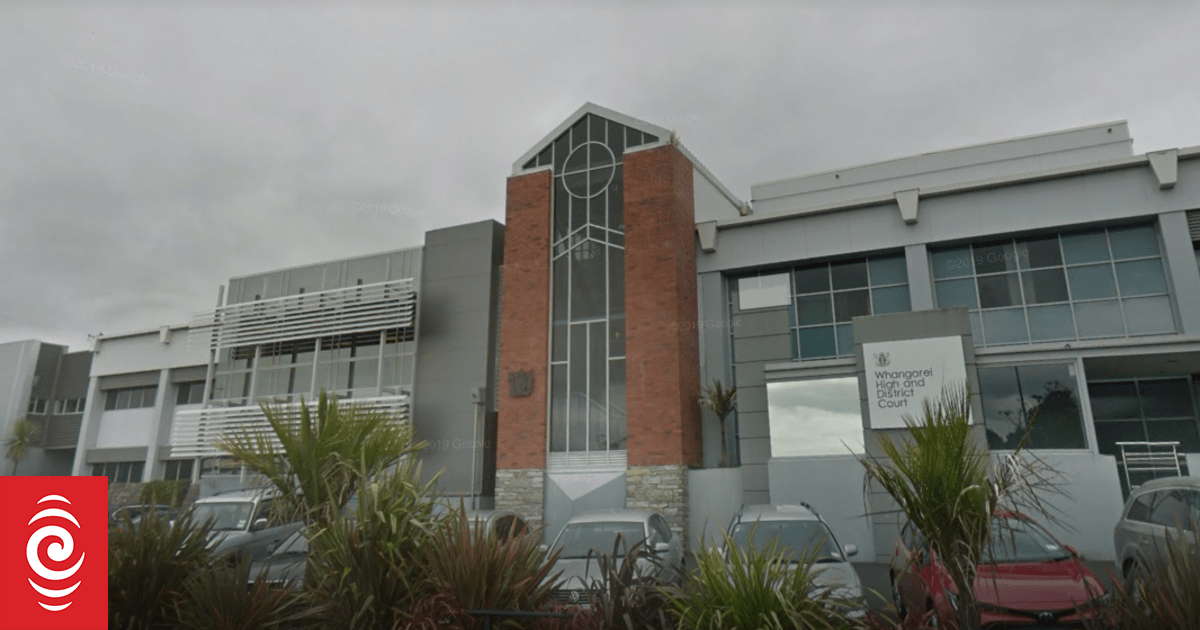
Anchors securing the wall deep into the hillside are installed at slip site A12.
Photo: Supplied/Waka Kotahi
The nation’s most troublesome stretch of State Highway 1 – through Mangamuka Gorge south of Kaitāia – is set to reopen by Christmas after what will be a closure of more than two years.
The 13-kilometre road was all but obliterated by a series of 15 slips in a major storm in August 2022, just over a year after the highway reopened following a previous year-long closure.
Repairs had been underway for less than six months when a second storm, in April 2023, triggered another 20 slips, significantly delaying repairs and escalating the cost.
The road through the steep and winding Mangamuka Gorge is a crucial link for people travelling between Kaitāia and the rest of the country.
Since August 2023, motorists have had to detour via State Highway 10 around the east coast, or use back roads through Broadwood and Herekino to the west, adding significantly to journey times.
However, Waka Kotahi NZ Transport Agency senior project manager Hendrik Postma said rebuilding of the Far North lifeline was now progressing well, and would be complete in time for Christmas – as long as there were no more major storms.
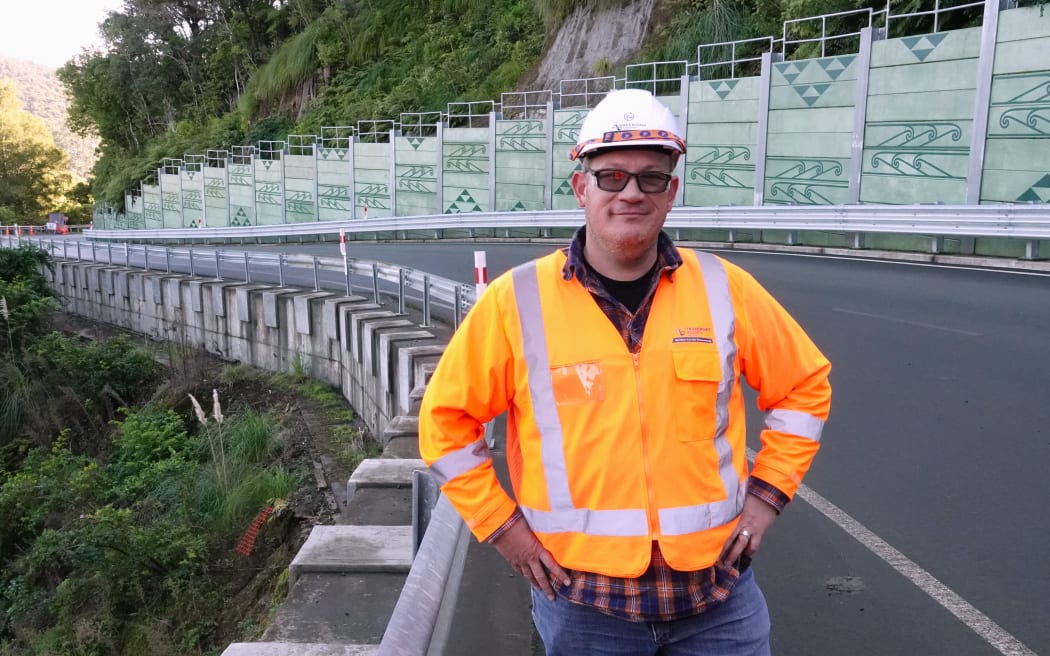
Waka Kotahi senior project manager Hendrik Postma says State Highway 1 through Mangamuka Gorge will be open in time for Christmas – as long as there are no more big storms.
Photo: RNZ/Peter de Graaf
He said a definite reopening date would be announced in September, once the worst of the winter rain had passed.
“We’ll open before Christmas, weather permitting. If we get through this winter, we’ll make it.
“Seventy-four percent of the employees on this project are locals so everybody’s got a vested interest to get this road open.”
Postma said it was one of the biggest roading recovery projects currently under way in New Zealand.
Waka Kotahi Northland recovery project director Mark Ware said the original budget, before the second lot of slips, was $100 million.
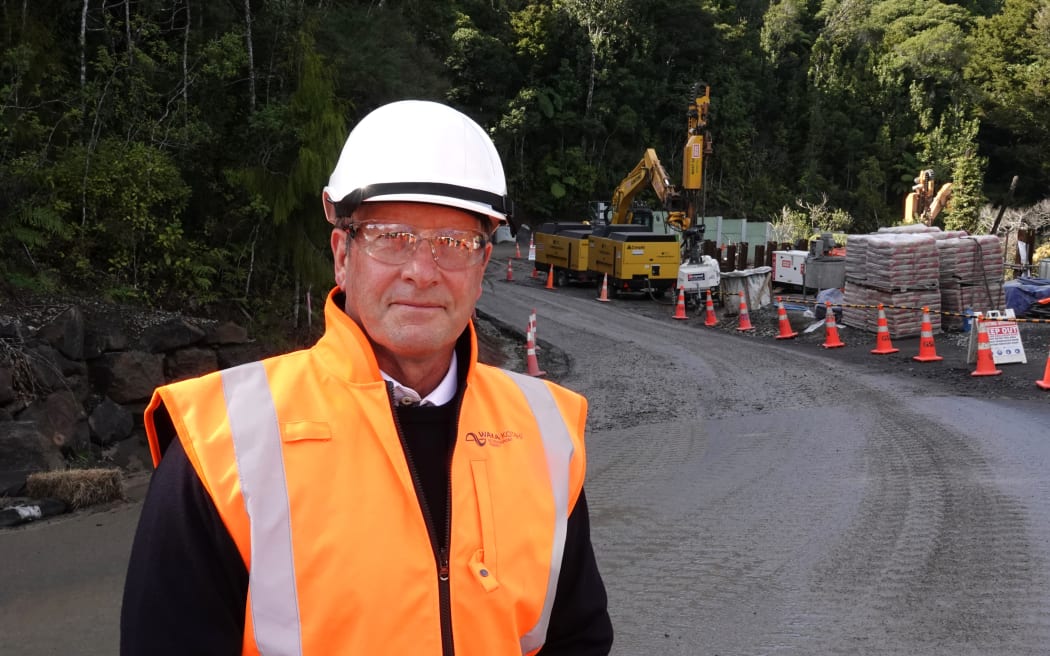
Waka Kotahi Northland recovery project director Mark Ware says the Mangamuka Gorge reconstruction project is far bigger and more complex than that being undertaken in the Brynderwyn Hills.
Photo: RNZ/Peter de Graaf
The 2023 storm damage had bumped the total cost up to about $165m.
Waka Kotahi’s board approved the extra funding just last Thursday, he said.
Ware, who is also in charge of rebuilding State Highway 1 over the Brynderwyn Hills further south, said the Mangamuka project was by far the bigger and more complex of the two.
In the Brynderwyns, the slips covered a distance of 2-3km, mostly above the road, so much of the work involved stabilising slopes.
In Mangamuka Gorge, on the other hand, the slips stretched for 13km and most were below the road, so the construction work required was much more complicated.
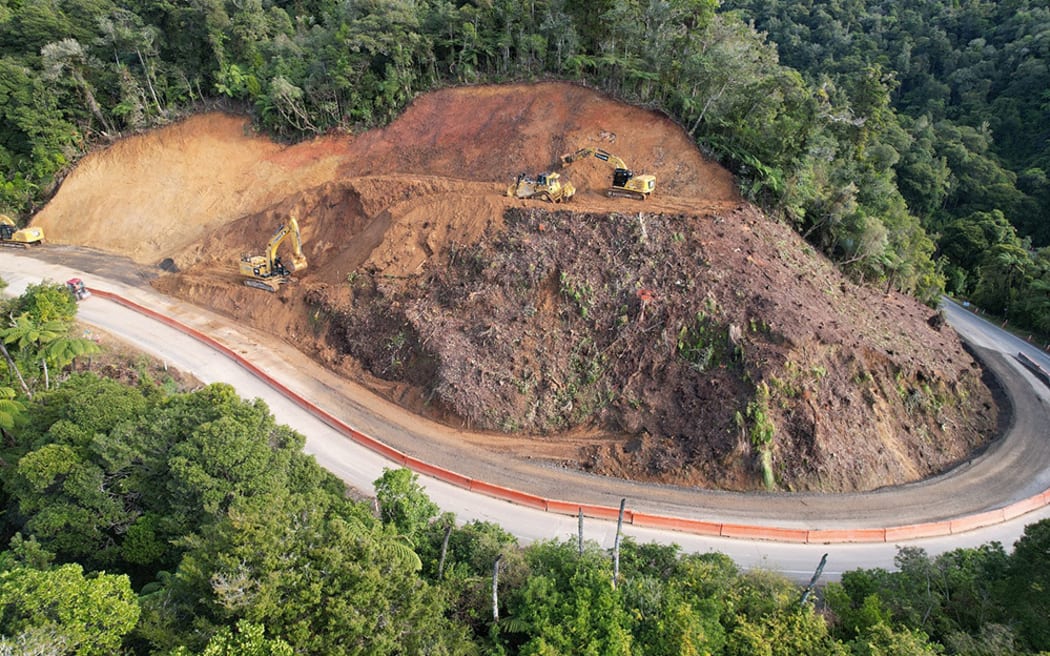
The A11 slip is the largest of the slips in the Mangamuka Gorge.
Photo: Supplied/Waka Kotahi
The increased cost of the Mangamuka project was due to the number of slips going from 15 to 35 after the 2023 deluge.
Ware said before the closures the Brynderwyns saw far more traffic than Mangamuka Gorge – 10,000-plus vehicles a day compared to 1300 – but both were economic and social lifelines for Northland.
“We are mindful of the fact that it’s having an impact on the people of Northland, so we really want to get it done and get it done fast, but get it done well.”
Ware said special challenges of the Mangamuka project included keeping workers safe while heavy machinery was moving up and down a narrow corridor, high rainfall, steep terrain, and the way the ground kept moving.
Postma said other complicating factors included the area’s unstable geology and the past year’s exceptionally high rainfall – 2800mm instead of the annual average of 1700mm.

An example of the “Mangamuka wall” construction method used to rebuild the highway at 15 critical slip sites.
Photo: RNZ/Peter de Graaf
Factors that helped the project included “the great people that are up here”.
Postma said he was often asked why a road tunnel was not drilled through the ranges instead.
He said the area’s geology made it unsuitable for tunnelling, and the cost would be measured not in millions but in billions of dollars.
Lead contractor CLL communications manager Kylie Harris said the closure of Mangamuka Gorge had a profound effect on families such as hers.
She lives in Kaitāia but used to travel often to Tautoro, south of Kaikohe, where her father was from and where many whānau events such as tangi and wānanga were held.
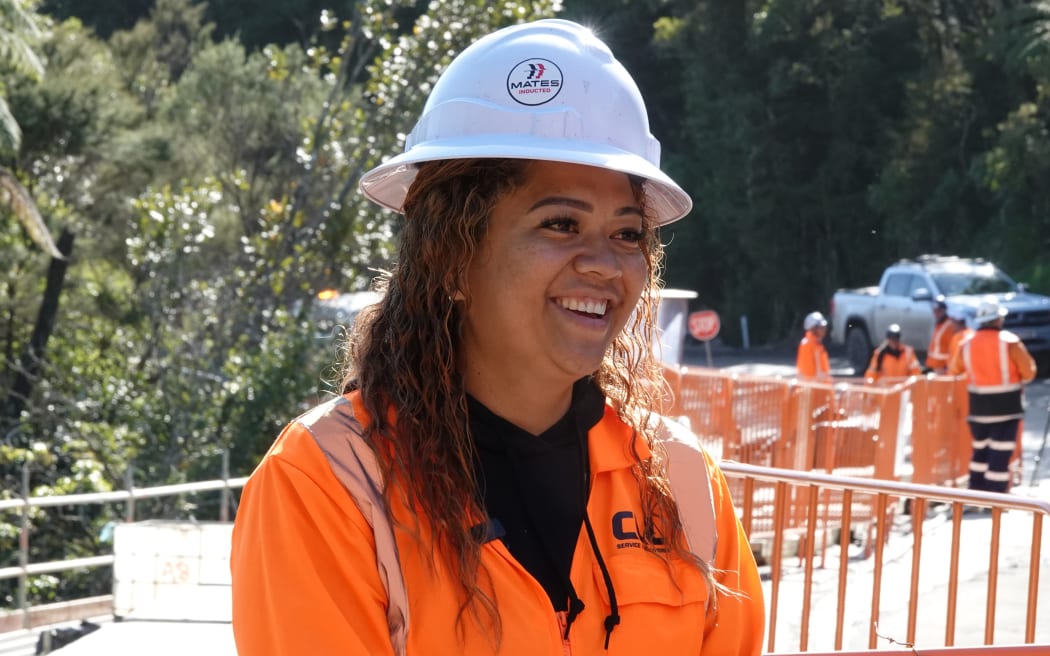
CLL communications manager Kylie Harris, of Kaitāia, says gorge workers have formed a close-knit community.
Photo: RNZ/Peter de Graaf
The detour via State Highway 10 had increased the travel time from one hour to just under two hours, so she was unable to make the trip, or connect with relatives on the south side of the gorge, as often as she used to.
The reopening of the highway would mean a lot to whānau on both sides of the ranges, she said.
It would, however, also be bittersweet, because she had made lifelong friends among the workers in the isolated gorge.
Harris said being involved in a project of such significance had given her, and her co-workers, a sense of pride.
According to a Waka Kotahi briefing document, of the 15 slips deemed as critical, three had so far been repaired with another three nearing completion.
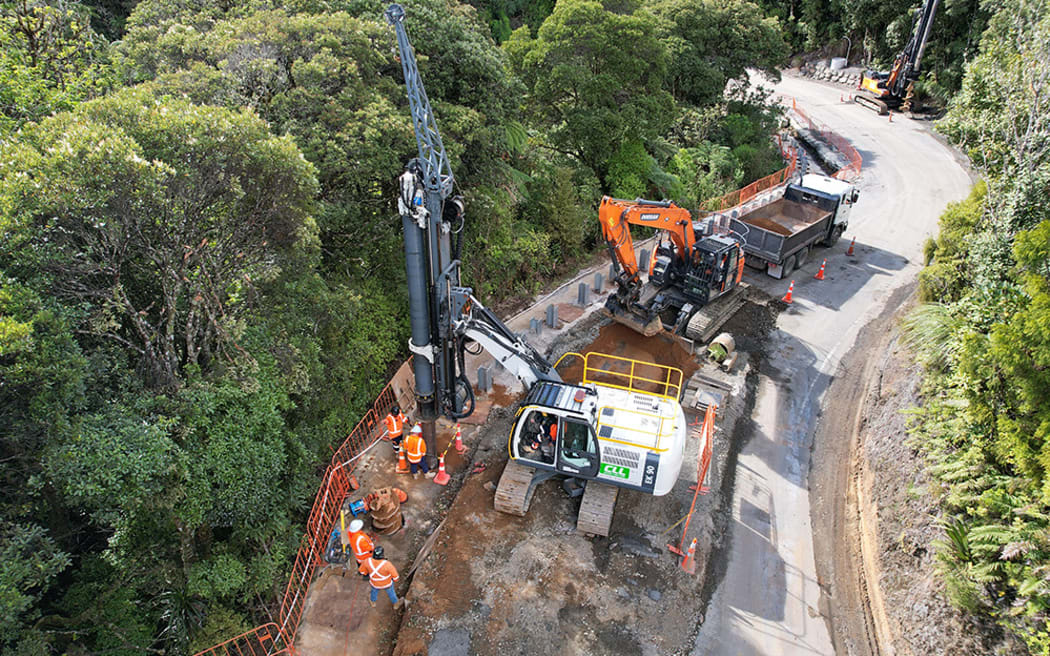
Piling is underway at slip A26.
Photo: Supplied/Waka Kotahi
At those locations the road had been rebuilt by driving piles of just over 1m in diameter up to 32m into the ground.
The piles were then capped with a concrete beam and anchored using steel cables driven up to 35m into the hillside.
The same design was used to repair the two worst slips after the earlier deluge in 2020. Those repairs withstood the 2022 and 2023 storms.
The most complex slip, called A11, is about 20m deep and extends some 200m up the hillside.
An estimated 30,000 cubic metres of soil has to be removed to allow the road to be re-routed away from the slip.
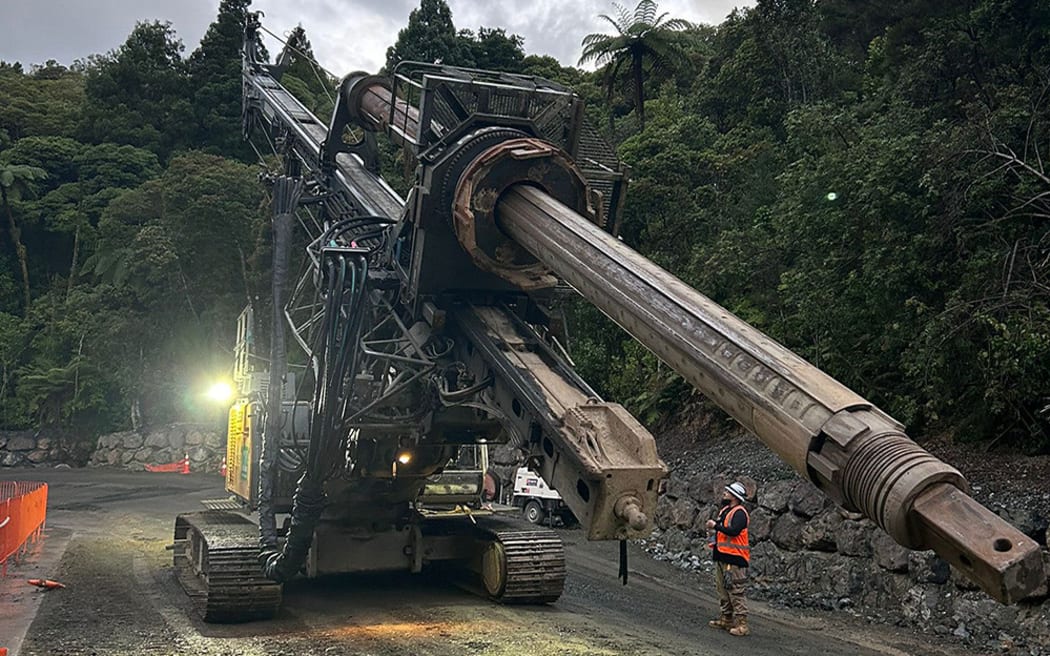
The largest drill in use in the Mangamuka Gorge is the Liebherr LB24.
Photo: Supplied/Waka Kotahi
As of Friday, 21,000 cubic metres had been shifted using giant dump trucks previously used on the Brynderwyn project.
Other aspects of the project include improving drainage, for example by replacing existing culverts with new ones two to three times the size, so the road would be better able to handle future downpours.
The new culverts would be fitted with steps and rocks to allow fish to travel upstream, and eDNA testing had been carried out to determine which species were present in the area’s streams.
Electronic bat monitoring equipment was used to check for bat roosts before trees are felled, and sniffer dogs were deployed to check for kiwi.
So far no kiwi had been found, but plenty of pupurangi (kauri snails), tusked wētā and skinks had been relocated away from work sites.
Much of the rock that forms the Maungataniwha Range, including Mangamuka Gorge, is a type known to geologists as Northland allochthon – or, more vividly, as “Northland problematic rock”.

